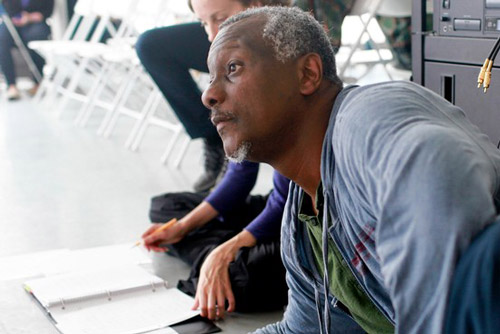It’s clear to hear him talk about his life that Robert Moses has always been artistically curious.
“When I was very small, about 6 years old, my mother noticed something. She got me a small organ that had 16 keys…but I didn’t stick with that. Later on, she signed me up for classes at Temple University. I must have been about 12…but I didn’t stick with that either. I took theater classes in high school & eventually found dance. That ended up being my primary
His need to explore dance in a physical sense was always intertwined with his desire to pursue choreography. From his earliest days experimenting with movement, Moses recalls creating his own work while exploring the dance choreographed by others. “I had some fantastic teachers – I took ballet and tap and modern and show dance. I was making work from the first year that I studied.” He is clear to point out that this was an entirely new way of looking at dance for him as a young adult: “When you dance the way you dance in the neighborhood you might look at it as ‘steps’ – [my education] gave me a new framework for thinking about dance.”
Moses, the namesake behind Robert Moses Kin, finds himself in the role of teacher these days as well as student. In his current collaboration with GroundWorks DanceTheater, his approach has been to “spend a little time getting to know each other. Then I set up certain mechanisms – like storytelling & story creation. We’ve tried to build relationships between the dancers in the room so they begin to think about each other in particular ways. Whether we use those [relationships] or not, we move forward from there.”
After the initial phase of any collaborative effort, Moses aims to lend context to the work: “I’ll often give the dancers a text to read & then we’ll sit down & talk about what’s in the text…[we explore] whose voices are missing [from historical conversations].”
In addition to choreographing, Moses will also be composing the music for this dance. He is letting the movement drive the way the music feels. His fascination with moving pieces, their dichotomy, extends to the relationship of those on stage with attendees: “It’s perspective & craft…how pieces behave & [what the people in the audience bring to the performance].”
David Shimotakahara appreciates the style & pace Robert Moses has brought to this collaboration: “What hits you when you work with Robert is that he is incredible facile with generating movement. He’s so quick – the dancers are ‘eyes wide open’ – they’re loving it. But it’s an intense, creative environment because of the volume that he’s generating…you really need to pay attention to keep up. [Working with Robert] really is phenomenal.”
Moses laughs, “That’s all part of it – the dancers’ attempt to keep up. You give them something to work with & they give it back to you, but they want it to be perfect. Like, see, I did it! [They want] you to give them a gold star & have everything be ‘fine.’ But that just isn’t how this works. If they give something back & it falls apart, that’s okay. I get something out of it falling apart.”
His works thrives on this give & take with the dancers. From the moments where the work he creates evolves through the exchange with the dancers as they work through it physically.
Dance, for Robert Moses, is iterative & ever-changing. He’s careful not to fall in love with the work before it’s ready: “Dances are seductive. You look at them, they’re like beautiful people. The dancers start to jump and you love it. You need to get away from them for a moment.”
He will have time to let the work breathe & change over the course of this collaboration. As it is shaped, we’ll provide more updates. In the meantime, be sure to mark your calendar for the world premiere performances (in Akron at E.J. Thomas Hall on March 5th, 2015 & in Cleveland at the Breen Center on March 20th & 21st, 2015)!

